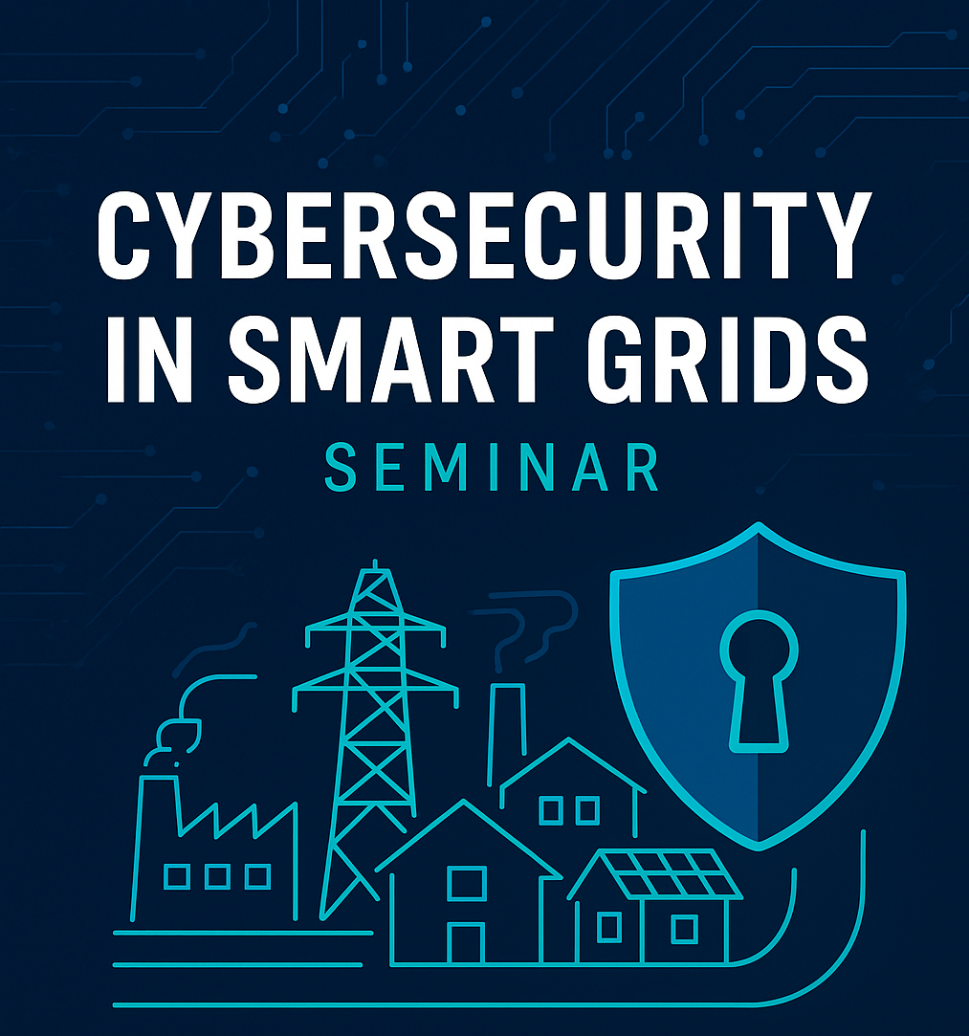Seminar Kommunikationssysteme (Cybersecurity in Smart Grids)
 Smart Grids (SGs) represent the next generation of power systems, integrating digital communication, renewable energy, and automation to improve reliability, sustainability, and efficiency. However, this digital transformation introduces complex cybersecurity challenges. The interconnected nature of smart grid infrastructures, including smart meters, AMI, SCADA, and IoT-based devices, creates numerous attack surfaces for cyber threats.
Smart Grids (SGs) represent the next generation of power systems, integrating digital communication, renewable energy, and automation to improve reliability, sustainability, and efficiency. However, this digital transformation introduces complex cybersecurity challenges. The interconnected nature of smart grid infrastructures, including smart meters, AMI, SCADA, and IoT-based devices, creates numerous attack surfaces for cyber threats.
This seminar provides a comprehensive exploration of cybersecurity strategies in smart grids. Through case studies, technical frameworks, and hands-on analysis, participants will understand the vulnerabilities, standards, privacy issues, and defense mechanisms associated with modern energy systems.
Details
| Type of course | Seminar (2 SWS) |
| ECTS credits | 5 |
| Language | English |
| Seminar | Thursday, 12:15 am – 2:00 pm, room 04.137 campo |
| First meeting | Thursday, October, 16th |
Main Topics
1) Smart Grid Data Sets
Smart Grids generate massive amounts of real-time data from devices like smart meters, SCADA systems, phasor measurement units (PMUs), and distributed sensors. These datasets are vital for understanding system behavior, simulating attacks, and training machine learning-based security tools. However, acquiring realistic, comprehensive, and labeled smart grid datasets remains a major challenge due to privacy, scale, and diversity issues. This topic explores the nature of smart grid data, common public datasets, and their role in cybersecurity research and detection system development.
2) Emerging Cybersecurity Challenges & Solutions
As Smart Grids evolve into complex cyber-physical systems, they become vulnerable to increasingly sophisticated cyber threats. Attacks such as False Data Injection (FDI), Advanced Persistent Threats (APT), ransomware, and coordinated intrusions can lead to blackouts or system instability. Meanwhile, the integration of AI/ML, blockchain, and anomaly detection offers new defensive possibilities. This topic investigates current and emerging threats and the evolving ecosystem of technical countermeasures shaping smart grid defense.
Subtopics:
1. False Data Injection Attacks (FDIA): Detection and Defense Techniques
o Explore how attackers manipulate meter data or grid signals.
o Discuss detection methods (e.g., state estimation, ML-based detection) and their limitations.
2. AI and Machine Learning for Smart Grid Intrusion Detection
o Review ML approaches such as supervised learning, GANs, and federated learning.
o Evaluate their effectiveness and challenges in real-time grid environments.
3. Advanced Persistent Threats (APTs) and Multi-Stage Attacks in Smart Grids
o Analyze known APTs like BlackEnergy or Triton.
o Study their lifecycle, impact, and possible countermeasures.
4. Cybersecurity Risk Assessment and Resilience Strategies for Smart Grids
o Focus on NIST-based or ENISA methodologies for risk assessment.
o Include resilience measures: segmentation, defense-in-depth, redundancy.
Ref:
• „Smart Grid Security: An End-to-End View of Security in the New Electrical Grid“, Gilbert N. Sorebo & Michael C. Echols (CRC Press, 2012) https://www.perlego.com/book/1719027/smart-grid-security-an-endtoend-view-of-security-in-the-new-electrical-grid-pdf
• „Cybersecurity for Industrial Control Systems“, Tyson Macaulay (2011), https://www.oreilly.com/library/view/cybersecurity-for-industrial/9781439801987/
• Faquir et al. (2021), „Cybersecurity in Smart Grids: Challenges and Solutions“, https://www.aimspress.com/article/doi/10.3934/electreng.2021002?viewType=HTML
• Achaal et al. (2024), „Study of Smart Grid Cybersecurity: Architectures, Communication Networks, and Countermeasures“
3) Cybersecurity Standards and Privacy in SG
Ensuring security and protecting user privacy in smart grids requires a foundation of clear regulatory frameworks and technical standards. From the NISTIR 7628 guidelines to IEC 61850 and GDPR compliance, these standards define secure system architectures, data protection requirements, and roles for utility operators. This topic focuses on the key cybersecurity and privacy standards in place for smart grids, the challenges of their practical implementation, and how they shape policy and technical design.
4) ICS and SCADA in Smart Grid Infrastructure
Industrial Control Systems (ICS) and SCADA are the operational backbone of Smart Grids. These systems monitor and control physical processes like voltage regulation, load balancing, and fault detection. However, legacy SCADA architectures often lack basic cyber protections and are prime targets for attacks like Stuxnet or remote-control exploits. This topic examines the role of ICS/SCADA in modern smart grids, their specific vulnerabilities, and the measures needed to secure these critical control infrastructures.
Subtopics:
1. Vulnerabilities in SCADA Systems and Legacy Protocols (e.g., DNP3, Modbus)
o Explain the SCADA role in grid operations.
o Highlight protocol weaknesses and examples of exploitation.
2. Security Architecture for Modern SCADA Systems in Smart Grids
o Discuss segmentation, encryption, intrusion detection, and secure firmware updates.
o Include a comparison between legacy vs. secure SCADA deployments.
3. Real-World SCADA Cyber Attacks and Their Lessons (e.g., Ukraine 2015, Stuxnet)
o Present a case study with timeline, attack vector, and system impact.
o Analyze what went wrong and what could have prevented it.
4. Integration Challenges: SCADA with IoT, AMI, and DERs in Smart Grids
o Investigate how expanding SCADA into broader SG environments increases attack surface.
o Discuss solutions for secure integration and interoperability.